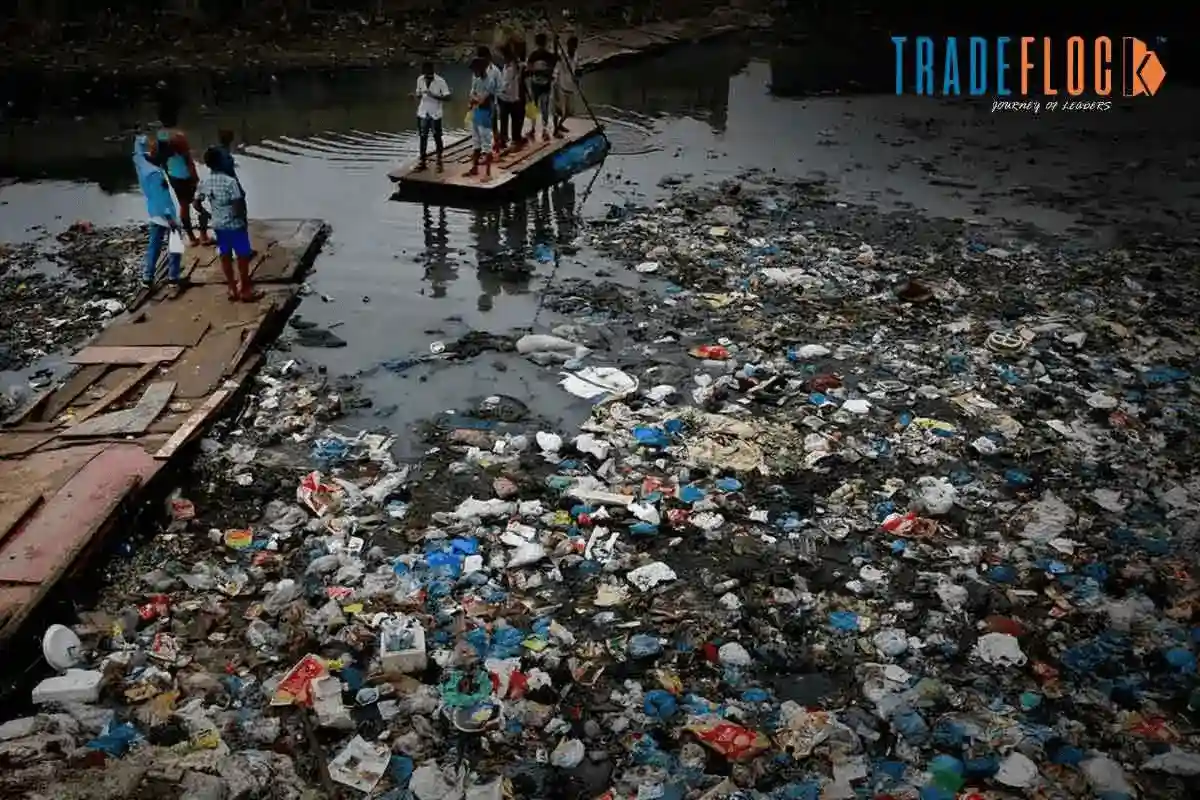Amid India’s vibrant economic growth and infrastructural development lies a grim reality that is often overlooked. India, a nation known for its rich cultural heritage and rapid economic growth, now holds the dubious distinction of being the world’s leading plastic polluter. This alarming status is not just a statistic; it reflects a growing environmental crisis that demands urgent attention.
Table of Contents
The Scale of the Problem
According to a recent study published in the journal ‘Nature’, India contributes nearly 20% of global plastic emissions, amounting to approximately 9.3 million tonnes of plastic waste annually. This staggering figure places India ahead of other major polluters like Nigeria and Indonesia, which emit 3.5 and 3.4 million tonnes per year, respectively. The sheer volume of plastic waste generated in India is enough to fill roughly 200,000 Olympic-sized swimming pools annually, emphasising the gravity of the situation.
The primary sources of this pollution are uncollected waste and open burning. In 2020 alone, 30 million tonnes of plastic were burnt in uncontrolled environments, releasing harmful toxins into the air and worsening the environmental crisis. The impact of this pollution is devastating, affecting land, water, and air and posing severe health risks to millions of people.
The Human Cost
The human cost of plastic pollution in India is immense. Over two-thirds of global plastic pollution arises from uncollected waste, affecting approximately 1.2 billion people without proper waste collection services. In urban areas, open rubbish mountains are becoming an all-too-common sight, particularly in the national capital, where three major dump sites continue to swell with uncollected rubbish.
The uncontrolled burning of plastic further worsens the situation. Fine particulates and toxic gases like carbon monoxide, released during the burning process, have been linked to heart disease, respiratory disorders, cancer, and neurological problems. The health implications are particularly severe for vulnerable populations, including children and the elderly, who are more exposed to the harmful effects of air pollution.
The Environmental Impact
In India, major rivers like the Ganga and Yamuna are severely affected by rising plastic pollution, which also challenges marine life’s survival. Plastic waste clogs waterways, disrupts ecosystems, and significantly threatens biodiversity. In coastal areas, the problem is even deeper. Indian beaches and shorelines are littered with plastic debris, affecting tourism and local economies. Marine animals, including fish, turtles and seabirds, often ingest plastic waste, leading to injury, starvation and death. The long-term consequences of plastic pollution on marine ecosystems are still not fully understood, but the signs are already troubling.
The Global Context
India’s plastic pollution problem is part of a larger global crisis. The study published in the journal ‘Nature’ highlights a notable global North-South divide regarding plastic pollution. Countries in Southern Asia, Sub-Saharan Africa, and South-eastern Asia, including India, are the highest contributors to plastic waste emissions. This is even though high-income countries (HICs) in the Global North have higher plastic waste generation rates.
The disparity is largely due to differences in waste management infrastructure. Waste management systems are inadequate or non-existent in many developing countries, including India. As a result, a significant portion of plastic waste is either burnt in open fires or discarded into the environment as unburnt debris. This unmanaged waste contributes to the growing tides of the plastic population that is choking the planet.
Efforts & Challenges
India requires a multi-layered approach to tackling the plastic pollution crisis. We need improved waste management systems, effective policies, and robust campaigns to raise awareness. Though the Indian government has taken several steps in this direction, like banning single-use plastic, that’s not enough. With a population of over 1.4 billion people, India generates enormous plastic waste daily. The lack of infrastructure and resources to manage this waste effectively heightens the situation. Additionally, the informal sector, which plays a significant role in waste collection and recycling, often operates without adequate support or regulation.
The Way Forward
Despite these challenges, there is hope. Innovative solutions and community-driven initiatives are emerging across the country. From grassroots organisations promoting plastic-free lifestyles to tech startups developing sustainable alternatives to plastic, there is a growing movement towards a more sustainable future. International cooperation is also crucial in this regard. The UN Environmental Assembly’s efforts to create a legally binding international treaty on plastic pollution by the end of 2024 are significant steps in the right direction. Such a treaty could provide the framework for coordinated global action to tackle plastic pollution and hold countries accountable for their contributions to the crisis.






